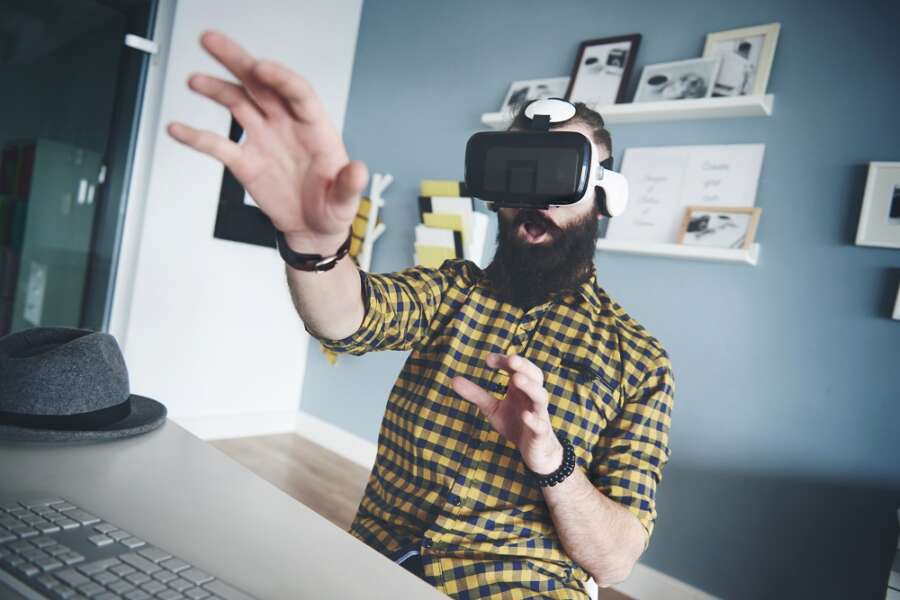
Ciaran Bollard, CEO of Kooomo
Both augmented reality (AR) and virtual reality (VR) will be at the centre of retail advances as we move through 2021, offering immersive and engaging experiences to consumers while in the comfort of their own homes, as well as improving communications, personalisation and engagement. Retailers looking to not only survive, but thrive in the years to come must therefore consider the benefits that AR and VR can offer. They should also look to create competitive experiences that will set their businesses apart, both online and in-store.
The rise of AR and VR in retail is best exemplified by recent research from Three Kit, which found that 71% of consumers say they would shop more often if businesses offered these technologies, while 61% noted they prefer retailers with AR and VR experiences. In fact, just as the pandemic has accelerated the development of eCommerce by around five years, the same can be said for AR and VR, by allowing businesses to bridge the physical gap between them and their consumers. Now is, therefore, the time for retailers to adopt new technologies to bolster their eCommerce offerings, and consider how AR and VR are redefining the future of the retail landscape.
With this in mind, let’s take a look at some of the most prominent AR and VR technologies that are transforming retail, as well as the future outlook for these growing trends, the unrivalled level of engagement they provide and what’s next on retailers’ agendas.
The virtual showroom
The virtual showroom is a new way of showing and selling products to buyers and businesses, and while it comes from the world of B2C fashion, it is promising to revolutionise B2B too. To clarify, when we talk about the virtual showroom, we don’t just mean a virtual copy of physical stores, but a technological interface that is now necessary for those who want to enhance the sales capacity of their buyer network.
High definition, 3D images, AR and VR environments are all now accessible thanks to specific technological partners, and virtual try on pays for itself by increasing conversations while reducing returns for “try-before-you-buy” purchases. This proves extremely beneficial in this new era of safety, by enabling customers to experiment with items the same way they would in person, no matter their location. The virtual showroom also supports assistance by phone, video call or chatbot during the entire purchasing process, as well as creating marketing actions aimed at a specific target audience or country.
Many subsectors are already taking advantage of the virtual showroom, including fashion and homeware with virtual changing rooms for clothing brands, try-on apps for cosmetics, and 3D placement for furniture and interior design. Retailers that successfully integrate AR by helping shoppers to visualise a product before purchase will have a significant competitive edge in today’s fast-paced, digitally-driven eCommerce landscape.
The at-home photoshoot
With less expendable cash to play with, alongside regulatory measures and restricted travel, there has been ceaseless disruptions to the traditional photo shoot. In fact, early last year, we saw many high-level brands attempt to overcome such challenges by allowing models to take things into their own hands and shoot product images from their homes. While in some cases this was successful, as a whole, reactions were mixed and there became a clear need for the at-home photoshoot to be taken to the next level.
Today, there are a number of AR and VR solutions that businesses can use to maintain high-quality shoots while working remotely. For example, technologies have been introduced that enable retailers to test models’ poses and facial expressions before finalising the shot, as well as possible backgrounds and lighting. Taking this a step further, 2021 witnessed the rise of the virtual runway. From panel discussions on social media to virtual showroom appointments, designers were able to showcase their latest collections like never before.
It, therefore, comes as no surprise that Gartner has included AR as one of the top ten strategic technologies expected to “drive significant disruption over the next five years”. This is especially pertinent given the current climate, as brands must ensure they adopt new methods such as the at-home photoshoot to showcase their products, and engage customers who have come to expect a flawless shopping experience as standard.
The gamified social experience
The next phase of AR and VR will likely be the gamification of the online shopping experience. It’s not just about what you buy anymore, it’s also about how you are buying it, and providing something exciting and challenging that will keep users engaged, particularly younger generations. For example, Burberry recently partnered with Snapchat to create an in-store AR game “B-Surf” where you can play, explore and shop with friends. Features such as badges, levels, performance charts, scoreboards and in-game currency are also important, as they increase user engagement by turning what can be a dull routine into something much more fun. Retailers that haven’t yet looked into gamification should ensure its next on their agenda and, in turn, witness the results it can bring.
Ultimately, AR and VR play a central role in creating exciting new ways of shopping, as immersive eCommerce technologies become increasingly relied upon by retailers looking to win consumers’ trust in the post-COVID economy. We, therefore, expect to see many brands prioritising investment into these technologies and their associated integrations over the next few years, and this is undoubtedly only just the start of these growing trends.
(1)https://www.threekit.com/20-augmented-reality-statistics-you-should-know-in-2020
(2)https://www.gartner.com/smarterwithgartner/gartner-top-strategic-technology-trends-for-2021/


